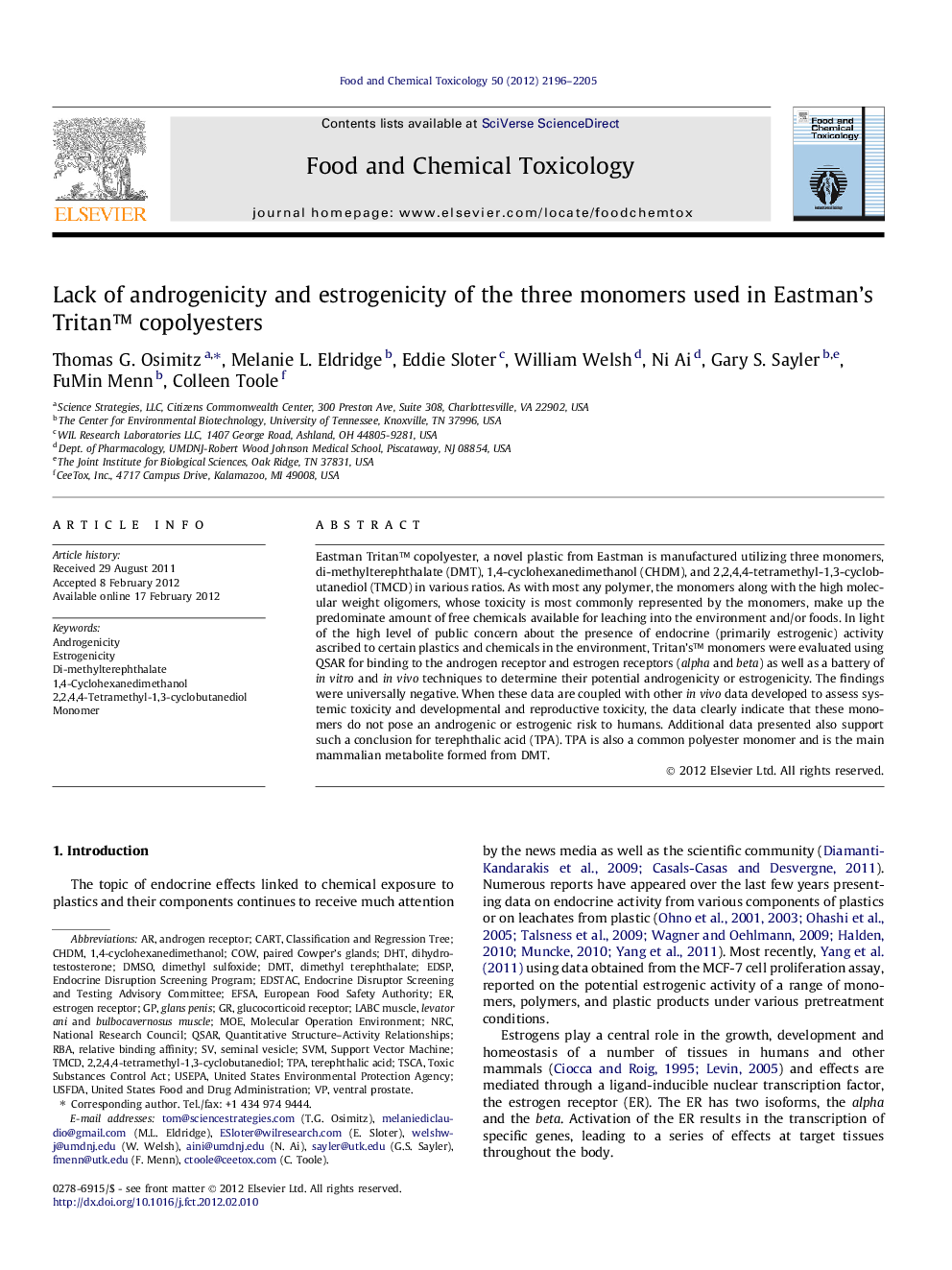| Article ID | Journal | Published Year | Pages | File Type |
|---|---|---|---|---|
| 5852916 | Food and Chemical Toxicology | 2012 | 10 Pages |
Eastman Tritan⢠copolyester, a novel plastic from Eastman is manufactured utilizing three monomers, di-methylterephthalate (DMT), 1,4-cyclohexanedimethanol (CHDM), and 2,2,4,4-tetramethyl-1,3-cyclobutanediol (TMCD) in various ratios. As with most any polymer, the monomers along with the high molecular weight oligomers, whose toxicity is most commonly represented by the monomers, make up the predominate amount of free chemicals available for leaching into the environment and/or foods. In light of the high level of public concern about the presence of endocrine (primarily estrogenic) activity ascribed to certain plastics and chemicals in the environment, Tritan's⢠monomers were evaluated using QSAR for binding to the androgen receptor and estrogen receptors (alpha and beta) as well as a battery of in vitro and in vivo techniques to determine their potential androgenicity or estrogenicity. The findings were universally negative. When these data are coupled with other in vivo data developed to assess systemic toxicity and developmental and reproductive toxicity, the data clearly indicate that these monomers do not pose an androgenic or estrogenic risk to humans. Additional data presented also support such a conclusion for terephthalic acid (TPA). TPA is also a common polyester monomer and is the main mammalian metabolite formed from DMT.
⺠Androgenicity and estrogenicity assessed with QSAR and in vitro, in vivo assays. ⺠Assessments for androgenicity and estrogenicity were universally negative. ⺠Data suggest no androgenic or estrogenic hazard or risk to humans.
